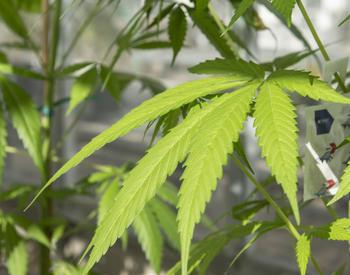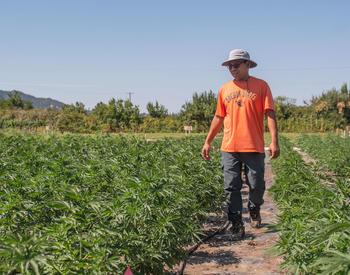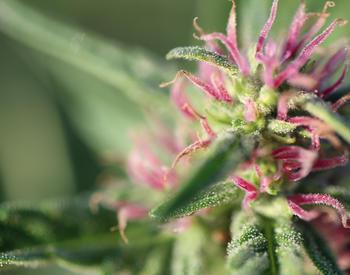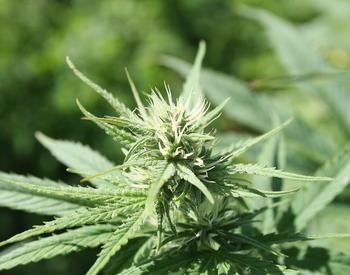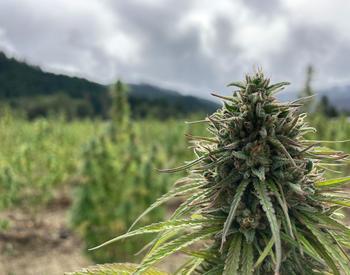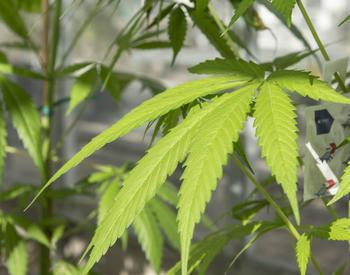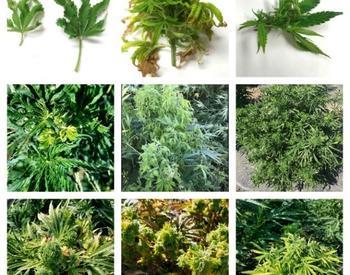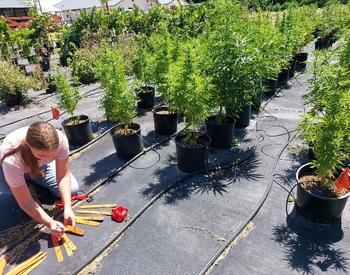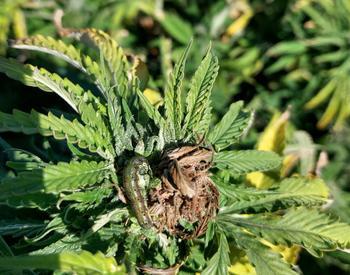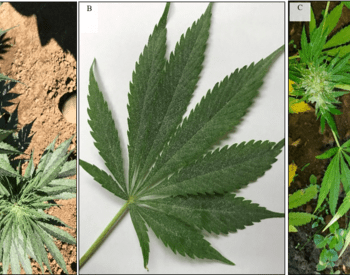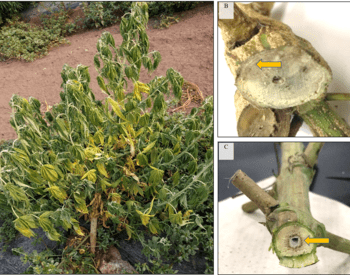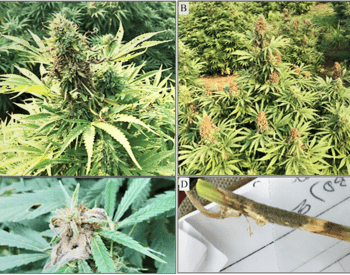Oregon State University faculty affiliated with the Global Hemp Innovation Center are finishing their hemp plantings for various research purposes. Three OSU research and extension centers are conducting production research. Here is a brief synopsis of each project.
Southern Oregon Research and Extension Center (SOREC)
At SOREC, we are conducting six hemp production research/demonstration trials:
Hemp breeding nursery
OSU is evaluating its own populations for floral and cannabinoid production. We aim to give Oregon hemp farmers an opportunity to grow OSU varieties adapted to local environmental conditions. These hybrid varieties will be developed with yield, water use efficiency and phenotypic stability at the forefront of the selection process.
Commercially available local floral hemp varietal trial
Along with the breeding research, we are evaluating six commercially available varieties that include Lifter Diploid, Lifter Triploid, White CBG, Oregon Sweet Gum, Photo CBD and 252S. For varietal evaluation, we will measure plant height, flower biomass and cannabinoid yield data. From this study, we will learn which varieties can perform best in the Southern Oregon climate and help growers decide what varieties to choose.
Transplanting date effects on flower biomass and cannabinoid yields
This research is a continuation of our 2021 study to test the effects of transplant timing on flower biomass and cannabinoid yields (Figure 1). Four transplant dates (first weeks of May, June, July and August) with two varieties (Stella and Lifter) were chosen for the experiment. Our previous trial revealed that timing could influence both the flower and cannabinoid yields. We observed decreased production when planting was shifted later in the season. However, variety affected how much yield reduction occurred. We are excited to see whether our previous results are confirmed with this year’s research.
Hemp biomass trial
This trial is part of a multistate hemp research project currently conducted in Oregon, Washington and California. We are evaluating the performance and the possible utilization of hemp for multiple uses, and two floral hemp varieties (Photo CBD and Bubbatonic) were chosen, with the SOREC setup shown in Figure 2. We have transplanted 50–60 plants per variety. As the season progresses, multiple measurements, including plant height, flower and cannabinoid yields, the fiber in the stem and root biomass, will be taken.
Irrigation and plant density effects on hemp flower and cannabinoid yields
This research continues previous studies to test whether the irrigation (0-120% potential evapotranspiration) and plant density (2,000–40,000 plants/acre) affect the flower biomass and cannabinoid yield levels. From these studies, we can optimize irrigation and plant density rates that can help improve crop yield levels.
Floral hemp dryland farming demonstration plots
This demonstration continues the 2021 study to test the possibility of integrating floral hemp in the Southern Oregon dryland cropping system. Last year, we established demonstration plots for two varieties (Sour Kush and Photo CBD). We found that plants can produce flowers and cannabinoid under dryland conditions (Figure 3). This year, we have established demonstration plots for five varieties, including three auto flower type (Blue Genius, Alpha Explorer and Rincon) and two full-season type (Sour Kush and Stella) varieties. In both years, seeds were sown using Jang-Seeder with narrow spacing (4 inches by 9 inches) at a depth of 1/2 inch and planted in early May.
Klamath Basin Research and Extension Center (KBREC)
Commercially available grain and fiber varietal trials
At KBREC, we are evaluating 10 commercially available varieties that include:
- Four fiber (Bialobrzeskie, F6-3/19 OR21, Altair and Jin Ma)
- Three grain (G7/6-19 OR21, Hlesiia and X-59)
- Three dual purposes (Henola, NWG 4113 & NWEG 2463)
Varieties are under the irrigated system, similar to our trial last year (Figure 4).
For fiber varietal evaluation, we will measure plant height and stem diameter and collect data on yield components such as biomass and blast fiber yields. For grain varietal evaluation, we will measure grain and protein yields. For the dual type, we will take both the grain and fiber measurements. From this study, we will learn which varieties can perform best in the Southern Oregon climate and help growers decide what grain and fiber varieties to choose.
Columbia Basin Agricultural Research Center (CBARC)
Commercially available grain and fiber varietal trials
Similar to KBREC, we are evaluating the same grain, fiber and dual-purpose varieties at CBARC but under dryland conditions (Figure 5). From this study, we will learn which varieties can perform best in the Eastern Oregon climate, and help growers in grain and fiber varietal selection.
Nitrogen effects on hemp grain production under dryland system
This research continues previous studies to test whether the nitrogen rate affects the grain and protein yield levels. From these studies, we can optimize nitrogen requirements that can help improve grain and protein yield levels.
All of our research projects are supported by the United States Department of Agriculture (USDA) Agricultural Research Service (ARS) Non-Assistance Cooperative Agreement (NACA) Project #2072-2100-054-00-D, and by USDA ARFI Sustainable Agriculture Systems Grant# 13333755
